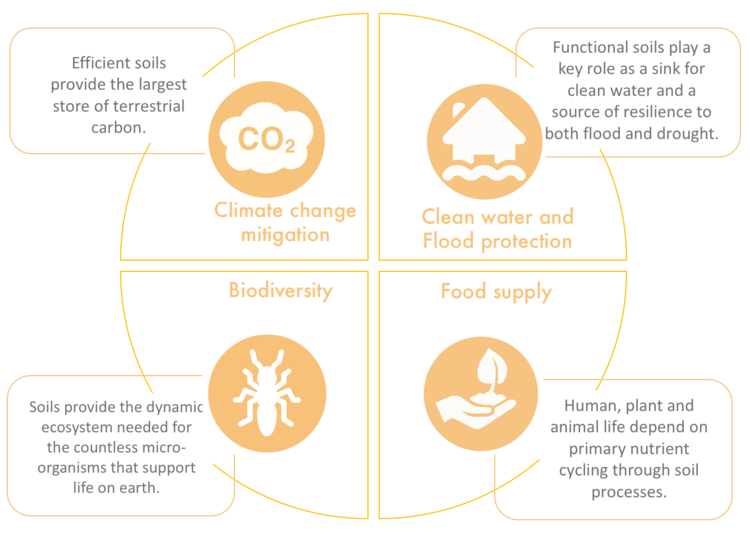What is Soil?
There are a number of ways of understanding soil: In simple, technical terms, it is the thin layer of material covering the earth's surface made up of mineral particles from the weathering of rocks, organic materials, air, water and living organisms— evolving and interacting slowly yet constantly.
We can also understand soil in terms of its function. Here the picture gets more complicated as these functions can be subjective and reflect local circumstances. However the four critical soil functions are widely understood as follows.

One could add to this list soil’s role as a recycler of raw materials, as a provider of construction materials, a source of pharmaceuticals and genetic resources and the foundations a ‘store’ for our cultural heritage.
Increasingly we are starting to understand our soils in terms of how they are changing – in particular the evidence of their decline and the effect this is having on their ability to carry out the functions listed above, and the wider economic and environmental impact.
There is a variety of sources that demonstrate this – at local, national and international level. These statistics might point to fertility loss, declining carbon stocks, contamination, diffuse pollution entering groundwater, the condition of our peatlands or the financial costs to society
Taken in isolation, none of these figures gives an accurate picture of any given soil’s condition. Unlike air or water, it is not always appropriate to think in terms of good soil or bad soil because circumstances such as climate and geography, as well as function all need to be taken into account.
This raises the issue of soil quality vs soil health – a distinction that continues to divide soil specialists across the spectrum. Again, the distinction can be subjective,
In 2008, the UN FAO defined soil health as “The capacity of soil to function as a living system, with ecosystem and land use boundaries, to sustain plant and animal productivity, maintain or enhance water and air quality, and promote plant and animal health. Healthy soils maintain a diverse community of soil organisms that help to control plant disease, insect and weed pests, form beneficial symbiotic associations with plant roots; recycle essential plant nutrients; improve soil structure with positive repercussions for soil water and nutrient holding capacity, and ultimately improve crop production."



